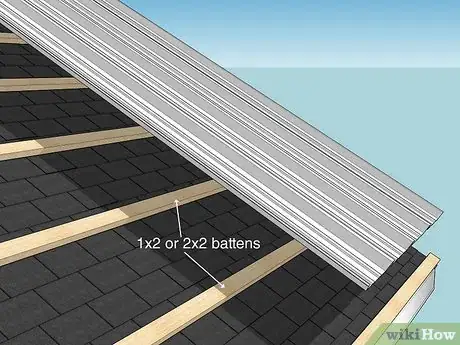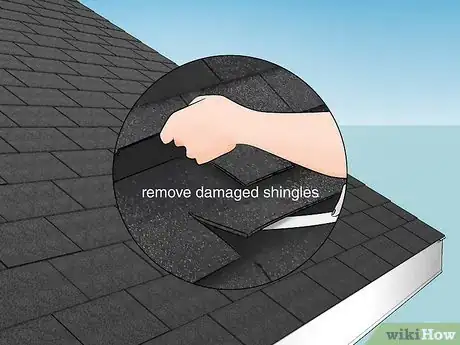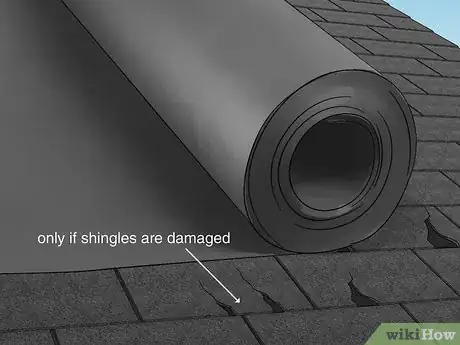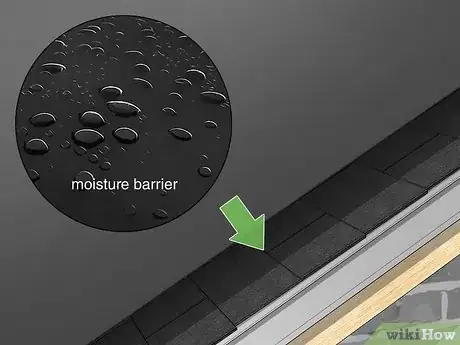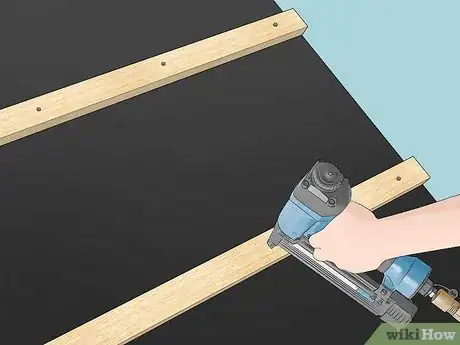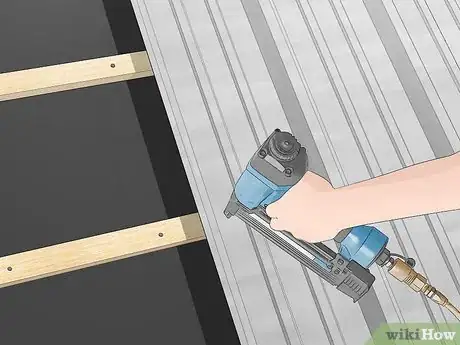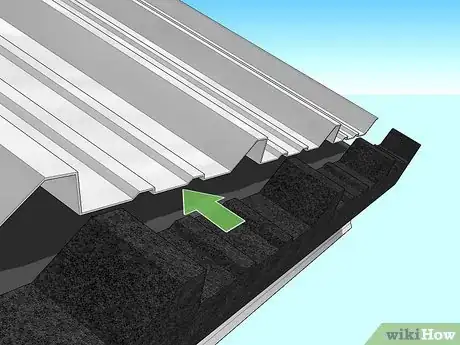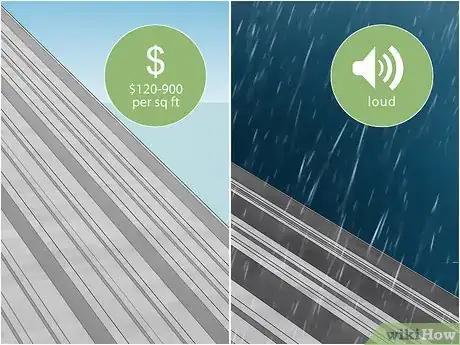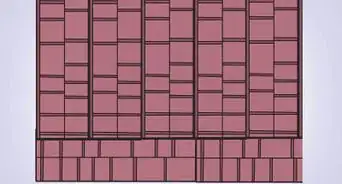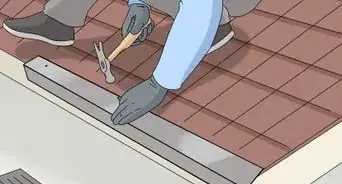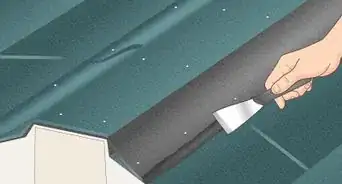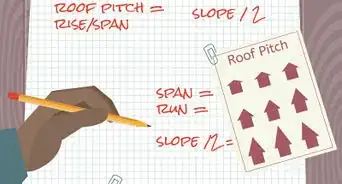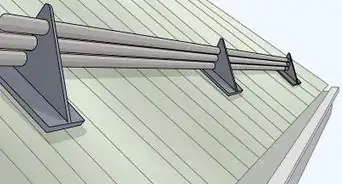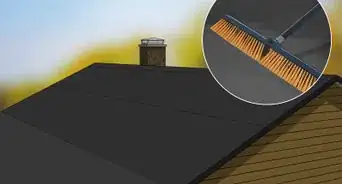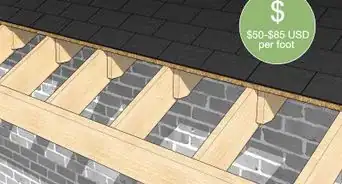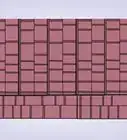This article was co-authored by David Bitan and by wikiHow staff writer, Eric McClure. David Bitan is a roofing professional, licensed contractor, and the owner and founder of Bumble Roofing based in Southern California. With over 12 years of construction industry experience, David specializes in restoring, repairing, and maintaining residential, commercial, and industrial roofs. With over 60 years of combined experience, Bumble Roofing provides easy, friendly services to structures including residential, commercial, industrial, multi-family, and government buildings along with hospitals, hotels, and churches.
There are 12 references cited in this article, which can be found at the bottom of the page.
This article has been viewed 22,739 times.
If your shingle roof is starting to show some wear and tear, you may be considering upgrading to metal. It’s a good choice; metal roofing is durable, environmentally friendly, and it looks good to boot! In most cases, it’s totally safe to have metal roofing installed over shingles. So long as the roof isn’t too heavy and it’s in good condition, you shouldn’t have any problems. While metal roofing installation isn’t something you can typically do on your own, we’ll walk you through what to expect when you’re getting the roof installed. You can always give this a shot if you’re working on a shed or some kind of smaller structure, though!
Steps
Do I need underlayment for metal roof over shingles?
-
1No, but only if the shingles are in really good shape. Underlayment is a layer of roofing fabric that goes on before you lay your roofing material or battens. It helps absorb moisture and prevents leaks from getting really out of hand. If your shingles are in really good shape, it’s not mandatory to install an underlayment over the shingles before you install battens or metal roofing.[3]
- The most popular underlayment is 30# roofing felt. Some contractors will lay plywood over the battens and then nail the felt to that before installing the roofing.[4] This adds a lot of weight though, so this step is often skipped if the shingles are really thick.
-
2You should use an underlayment if you want an added safety measure. Underlayment functions as a protective barrier. It absorbs moisture, prevents leaks, and protects the underside of your metal roofing. It’s also fairly inexpensive to have installed as well, so you aren’t losing much by having a contractor add an underlayment even if it isn’t strictly necessary.[5]
How are the metal sheets installed over shingles?
-
1Nail or screw the underlayment and battens into the shingles. If the shingles are in decent shape, lay out the underlayment felt flat across the old roof.[6] Use a nail gun or nail and hammer to secure the felt to the plywood underneath the shingles.[7] Then, nail 2 by 2 in (5.1 by 5.1 cm) or 1 by 2 in (2.5 by 5.1 cm) boards in horizontal, parallel rows along the roof.[8]
- If the shingles aren’t healthy, you’ll have to remove the shingles first.
- The batten installation is really the only component of the process that makes it different from a standard metal roof installation.
-
2Lay out metal panels and secure them to the battens. You may need a crew for this. Haul the metal sheets up to the roof screw them to the battens or subroof to secure them in place. These sheets are typically pretty large and unwieldy, so it may take some time to line the seams of each sheet up to make the room symmetrical.[9]
- If the grooves on the metal panels aren’t flush when they’re laid side-by-side, you’ll need to cut them so that the seams match.
-
3Install closure strips over the gaps and add the flashing. Once the metal sheeting is in place, cover each seam where two sheets meet with rubber or foam closure strips. These will keep water from penetrating your roof. Then, flash the roof by covering the edges of your roof with drip edge, and the apex of the roof with a ridge cap. Secure the flashing by screwing it into the edging and/or battens under the roof.[10]
- Cover each screw or nail that you can see with a rubber grommet to protect the tiny gaps between the fasteners and the roof from letting water in.
- As far as roofing projects go, metal roofing is relatively easy and fast to install. It’s a lot easier to just lay metal sheets down next to one another than it is to lay individual shingles or securing rubber slate.
Can I install metal roofing over shingles on my own?
-
1You can if you have roofing experience, but it’s not recommended otherwise. Working on a roof is dangerous, metal roofing requires multiple people to install, you need special equipment to raise and install the sheets, and the consequences of a poor roof installation can be disastrous. All things considered, you’re best off hiring a pro here.[11] If you’re an experienced roofer you can go for it, though![12]
- Expect to spend anywhere from $15,000-60,000 on metal roofing depending on the size of the roof and the material you choose. Yes, it’s expensive, but you won’t need to repair your roof for at least 40-50 years![13]
- You can try this without roofing experience if you’re just working on a shed or something small like that, and the fall risk isn’t particularly dangerous.[14]
-
2It’s typically illegal to install roofing like this without a permit. You’re usually allowed to patch a roof or make minor repairs on your own without a permit, but you almost always need to have a permit to install a brand-new roof. If you’re considering doing your own roof, reach out to your local building department to file for a permit.[15]
- Depending on where you live, you may not legally be allowed to redo your roof if you aren’t a licensed contractor.[16]
- Roofing contractors often provide free quotes. Reach out to multiple contractors and meet with them to see what they’ll charge for the project. Make sure that they’re licensed with both the city and state!
What are the disadvantages of laying a metal roof over shingles?
-
1The additional weight can be a concern in the long run. Your home was likely built to hold one roof. If your home isn’t brand new, it’s possible that your current shingles were installed over older shingles. If you throw a metal roof on top of that, you’ve got three layers of roofing material on a roof designed to hold one layer. Over time, as your joists, subroof, and shingles degrade, there’s a potential of buckling or damage.[17]
- The main reason this isn’t a giant concern on a single layer of shingles is that metal roofing is usually relatively lightweight. So long as you only have one layer of shingles and your home isn’t super old, this shouldn’t be a huge risk.
Expert AnswerQHow can you extend the lifespan of shingles?
David Bitan is a roofing professional, licensed contractor, and the owner and founder of Bumble Roofing based in Southern California. With over 12 years of construction industry experience, David specializes in restoring, repairing, and maintaining residential, commercial, and industrial roofs. With over 60 years of combined experience, Bumble Roofing provides easy, friendly services to structures including residential, commercial, industrial, multi-family, and government buildings along with hospitals, hotels, and churches.Roofing Contractor & Maintenance Professional
 EXPERT ADVICEAnswer from David Bitan:
EXPERT ADVICEAnswer from David Bitan:The best thing that you could do to extend the lifespan of shingles is to make sure your gutters are clean. If they are clogged, rainwater will start collecting in particular areas of the roof. Eventually, It will start leaking through the shingles.
-
2Metal roofing tends to be expensive, and it’s kind of loud in the rain. Metal roofing can run $120-900 per square foot, which is quite costly. The good news is that it’s extremely durable and you shouldn’t need to replace your roof again any time soon! The other big thing owners notice is that they tend to make noise when it rains, but it shouldn’t be too loud when you’re inside.[18]
- The noise shouldn’t be particularly noticeable when you’re inside if you left the shingle roof on. There will be enough insulation to dampen the sound.
- If you want to save money on metal roofing, consider aluminum or galvanized steel. These are the cheaper options when it comes to residential metal roofing materials.[19]
- If you’re installing roofing on a shed or something small, go with corrugated steel. This will be the cheapest choice.[20]
- However, the most cost-efficient way of roofing is using asphalt shingles.[21]
- Repairing the roof is very cheap because repairs usually do not last long. If the roof is more than 15 to 20 years old, it may be better to replace the entire roof.[22]
Expert Q&A
-
QuestionWhat is the most cost-efficient way of doing roofing?
 David BitanDavid Bitan is a roofing professional, licensed contractor, and the owner and founder of Bumble Roofing based in Southern California. With over 12 years of construction industry experience, David specializes in restoring, repairing, and maintaining residential, commercial, and industrial roofs. With over 60 years of combined experience, Bumble Roofing provides easy, friendly services to structures including residential, commercial, industrial, multi-family, and government buildings along with hospitals, hotels, and churches.
David BitanDavid Bitan is a roofing professional, licensed contractor, and the owner and founder of Bumble Roofing based in Southern California. With over 12 years of construction industry experience, David specializes in restoring, repairing, and maintaining residential, commercial, and industrial roofs. With over 60 years of combined experience, Bumble Roofing provides easy, friendly services to structures including residential, commercial, industrial, multi-family, and government buildings along with hospitals, hotels, and churches.
Roofing Contractor & Maintenance Professional The most cost-efficient way of doing roofing is by using asphalt shingles. They are also called cool roof shingles. They cool down your home, help with insulation and your energy bills.
The most cost-efficient way of doing roofing is by using asphalt shingles. They are also called cool roof shingles. They cool down your home, help with insulation and your energy bills.
References
- ↑ https://www.metalpanelsinc.com/wp-content/uploads/2018/04/MPI-roof-over-shingles.pdf
- ↑ https://www.asktoddmiller.com/should-existing-asphalt-shingles-be-removed-before-a-metal-roof-is-installed/
- ↑ https://www.metalroofing.com/spirit/topic/6089/proper-installation-over-shingles--metal-roof-noob/
- ↑ https://www.metalpanelsinc.com/wp-content/uploads/2018/04/MPI-roof-over-shingles.pdf
- ↑ https://www.metalroofing.com/spirit/topic/6089/proper-installation-over-shingles--metal-roof-noob/
- ↑ https://myrooff.com/metal-roof-over-shingles/
- ↑ https://youtu.be/sGK34HS8mRA?t=361
- ↑ https://www.metalpanelsinc.com/wp-content/uploads/2018/04/MPI-roof-over-shingles.pdf
- ↑ https://myrooff.com/metal-roof-over-shingles/
- ↑ https://myrooff.com/metal-roof-over-shingles/
- ↑ David Bitan. Roofing Contractor & Maintenance Professional. Expert Interview. 14 July 2020.
- ↑ https://www.homedepot.com/c/ah/how-to-install-metal-roofing/9ba683603be9fa5395fab90cb781dbc
- ↑ https://www.thisoldhouse.com/roofing/22454384/metal-roofing-cost
- ↑ https://www.thisoldhouse.com/roofing/21017930/33-of-your-toughest-roofing-questions-answered
- ↑ https://www.homeadvisor.com/r/diy-roofing/
- ↑ https://www.tn.gov/commerce/regboards/contractors/consumer-resources/tips-for-hiring-a-contractor.html
- ↑ https://www.asktoddmiller.com/should-existing-asphalt-shingles-be-removed-before-a-metal-roof-is-installed/
- ↑ https://www.bobvila.com/articles/metal-roof-pros-and-cons/
- ↑ https://www.thisoldhouse.com/roofing/22454384/metal-roofing-cost
- ↑ https://www.thisoldhouse.com/roofing/22454384/metal-roofing-cost
- ↑ David Bitan. Roofing Contractor & Maintenance Professional. Expert Interview. 14 July 2020.
- ↑ David Bitan. Roofing Contractor & Maintenance Professional. Expert Interview. 14 July 2020.
